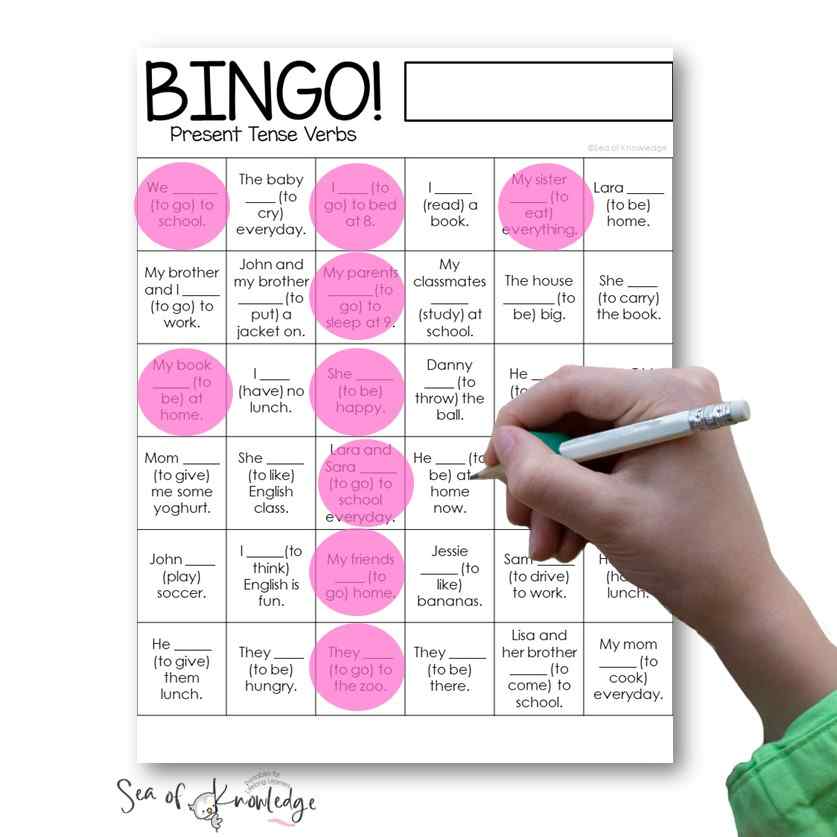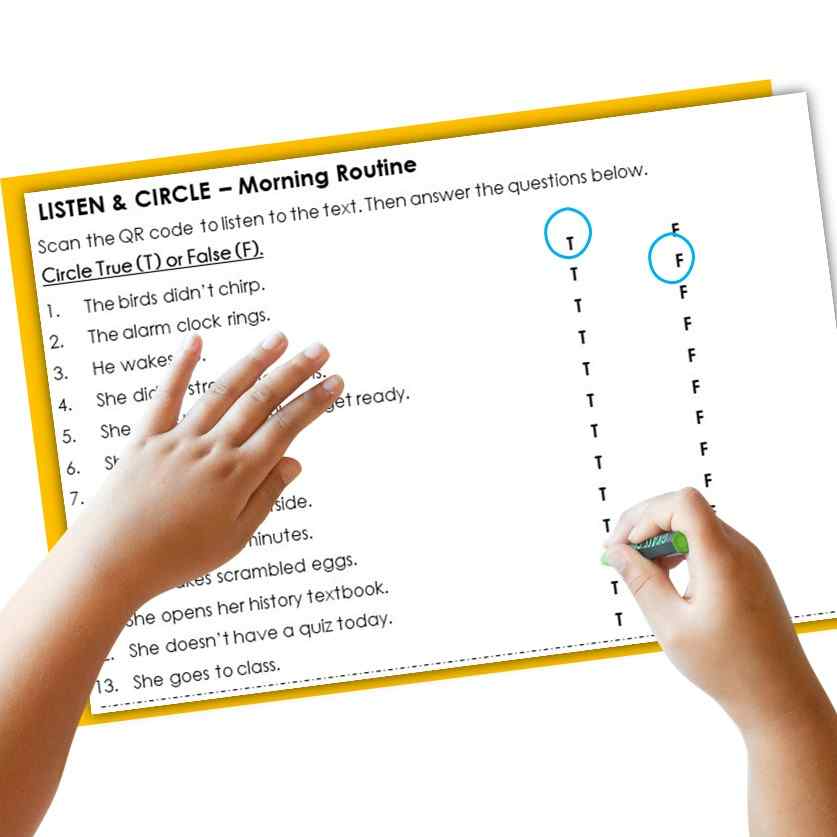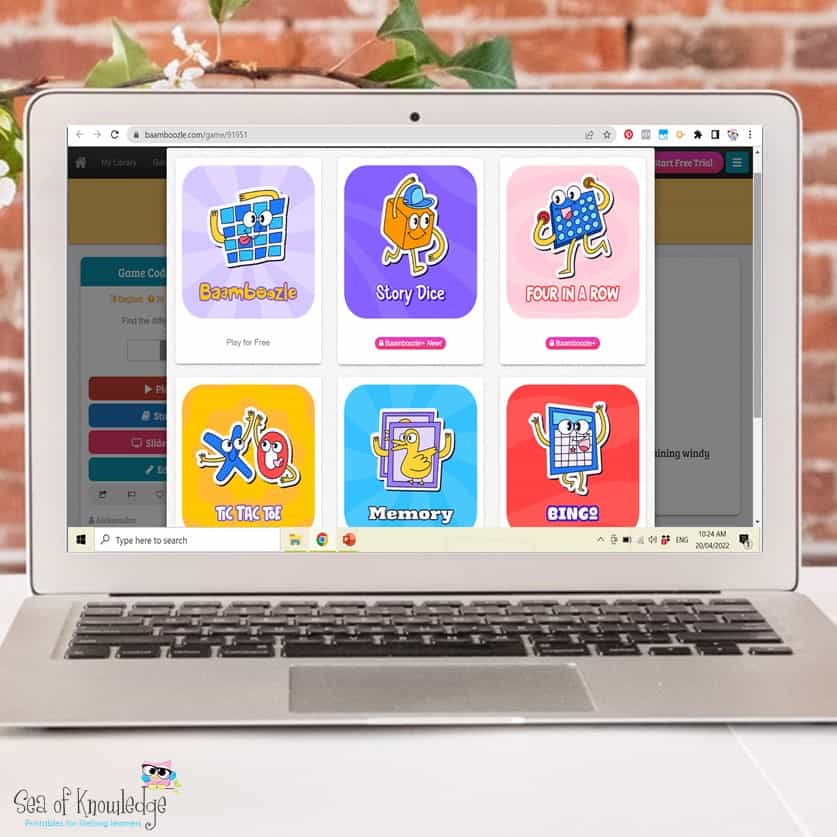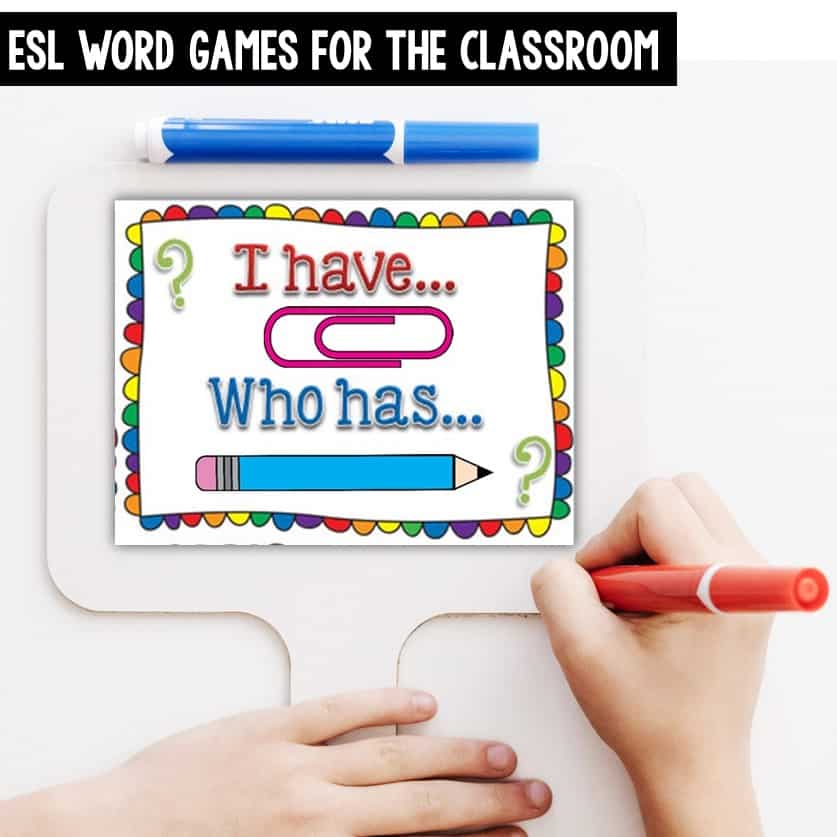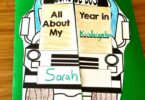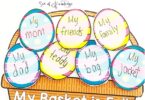Today, I am thrilled to introduce you to a fantastic learning resource that will make your English language journey an absolute delight. A fun verb to have present tense bingo game! Get ready to unleash the power of the present tense with our Verb to Have present tense printable game.
Join me as I share personal stories and insights into the English language, from my teaching experience!

As an avid learner and language enthusiast, I understand the importance of engaging, interactive tools in the learning process.
That’s why I’ve developed this exciting game that will not only enhance your understanding of the present tense but also make learning English grammar a whole lot of fun!
Present Simple Tense
The present simple tense is the most basic form of the present tense. It is used to describe routines, habits, and permanent situations.
I’ve previously shared another super fun game using the present tense.
For example, “I have a dog,” or “She has a beautiful voice.” In the present simple, we use the base form of the verb, which is the verb in its simplest, unaltered state.
Present Continuous Tense: The present continuous tense is used to describe actions happening at the present moment or plans for the future.
It is formed by using the present participle of the main verb (e.g., “having,” “playing”) along with the auxiliary verb “to be.” For example, “They are having dinner right now,” or “We are going to a concert next week.”
Present Perfect Tense: The present perfect tense is a unique and versatile tense that connects the past to the present. It is used to describe past actions that have a connection or impact on the present moment. For instance, “I have visited Paris,” or “She has finished her work.” The present perfect tense is formed by using the auxiliary verb “have” or “has” followed by the past participle of the main verb.
Present Perfect Continuous Tense: The present perfect continuous tense is a combination of the present perfect and present continuous tenses. It is used to describe ongoing actions that started in the past and continue into the present. For example, “I have been studying for hours,” or “They have been waiting for you.” This tense is formed by using the auxiliary verb “have” or “has” followed by “been” and the present participle of the main verb.
It’s important that students are familiar with a modal verb list, past action verbs, irregular verb examples and can easily identify the difference between a singular pronoun and plural pronoun.
Main uses of the verb
Understanding the different uses and forms of the present tense is crucial in mastering the English language.
With our Verb to Have present tense printable game, you’ll have the opportunity to practice and reinforce your knowledge in a dynamic and entertaining way.
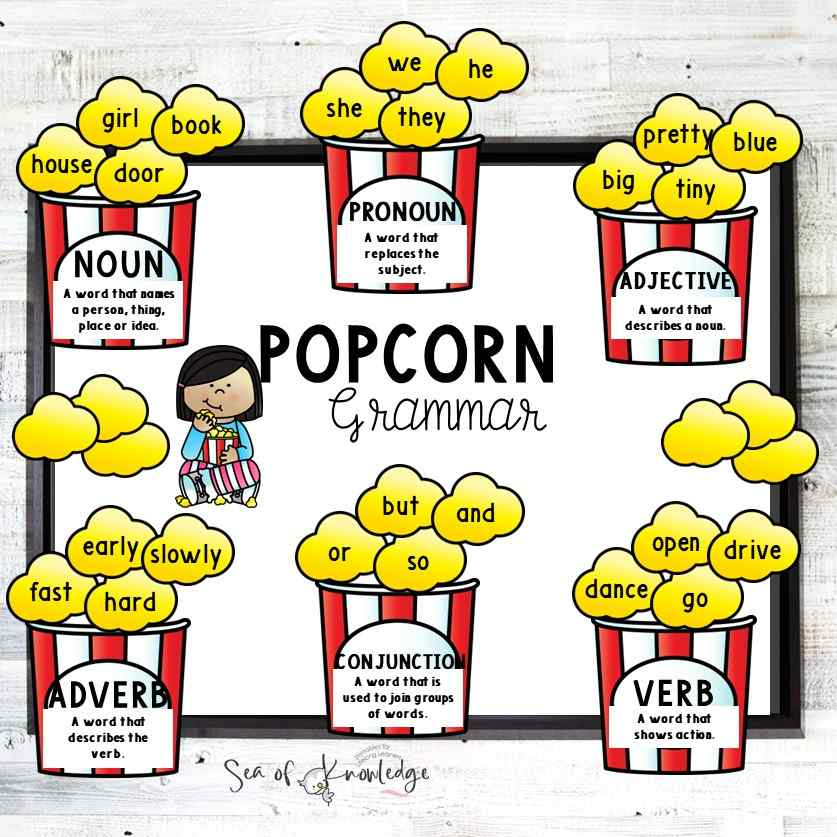
The game includes a variety of activities and exercises that cover a wide range of topics related to present tense sentences.
From filling in the blanks with the correct verb forms to creating negative sentences and answering questions, each activity is designed to strengthen your understanding and usage of the present tense with the verb ‘to have’.
But wait, there’s more! Our printable game also features example sentences, irregular verbs, and even modal verbs, allowing you to expand your knowledge and tackle more complex grammatical structures.
You’ll have the chance to explore the different forms of the verb “to have,” its short forms, and how to use it with both singular and plural pronouns.
How to teach the verb to have
Teaching the verb “to have” in the present tense can be an engaging and interactive experience for your students. Here’s a step-by-step guide on how to effectively teach the verb “to have” in the present tense:
Make sure to include many ideas following sentence examples to help students learn the verb.
They need to learn to form the present tense form of the verb more easily and the best way to do that is to learn the correct form in use.
Begin the lesson by introducing the verb “to have” and its meaning. Explain that “to have” is a verb that shows possession or ownership.
Give examples using the pronouns “I,” “you,” and “they” to illustrate its usage, such as “I have a pen,” “You have a book,” or “They have a dog.”
Include many examples of the base verb and the main differences along with the grammar rules to form them. Especially at the end of the verb.
Explain that the present simple tense is used to talk about routines, habits, and possessions.
Teach your students how to form sentences in the present simple tense using “to have.”
Provide clear examples, such as “I have a cat,” “She has two brothers,” or “We have a picnic every Sunday.”
Encourage your students to practice by creating their own sentences using the verb “to have” and different pronouns.
Negative Forms: Introduce negative sentences in the present simple tense with “to have.”
Teach your students how to form negative sentences by adding “do not” or “does not” before the verb.
For example, “I do not have a car,” or “She does not have a laptop.”
Practice this with your students by providing sentences for them to negate and by asking them to create their own negative sentences.
Questions: Teach your students how to form questions in the present simple tense with “to have.”
Show them how to use the auxiliary verb “do” or “does” at the beginning of the sentence. For instance, “Do you have a pencil?” or “Does he have a sister?”
Provide plenty of examples and encourage your students to practice forming questions using “to have.”
Plural Forms: Explain how to use the verb “to have” in the third-person plural form.
Demonstrate that the pronoun “they” is used with the base form of the verb “have” without any changes.
For example, “They have three cats” or “They do not have any homework.” Allow your students to practice by creating their own sentences using the plural form of “to have.”
Grammar Interactive Activities
Engage your students in interactive activities to reinforce their understanding of the verb “to have” in the present tense.
You can create worksheets or use online resources that include fill-in-the-blank exercises, matching activities, or role-playing games.
Get this printable game below.

These activities will provide your students with opportunities to practice using the verb “to have” in different contexts and sentence structures.
Real-life Context
Help your students apply their learning in real-life situations. Provide scenarios or prompts where they can use the verb “to have” to describe their possessions, family members, or daily routines.
Encourage them to share their responses in pairs or small groups, promoting conversation and communication.

